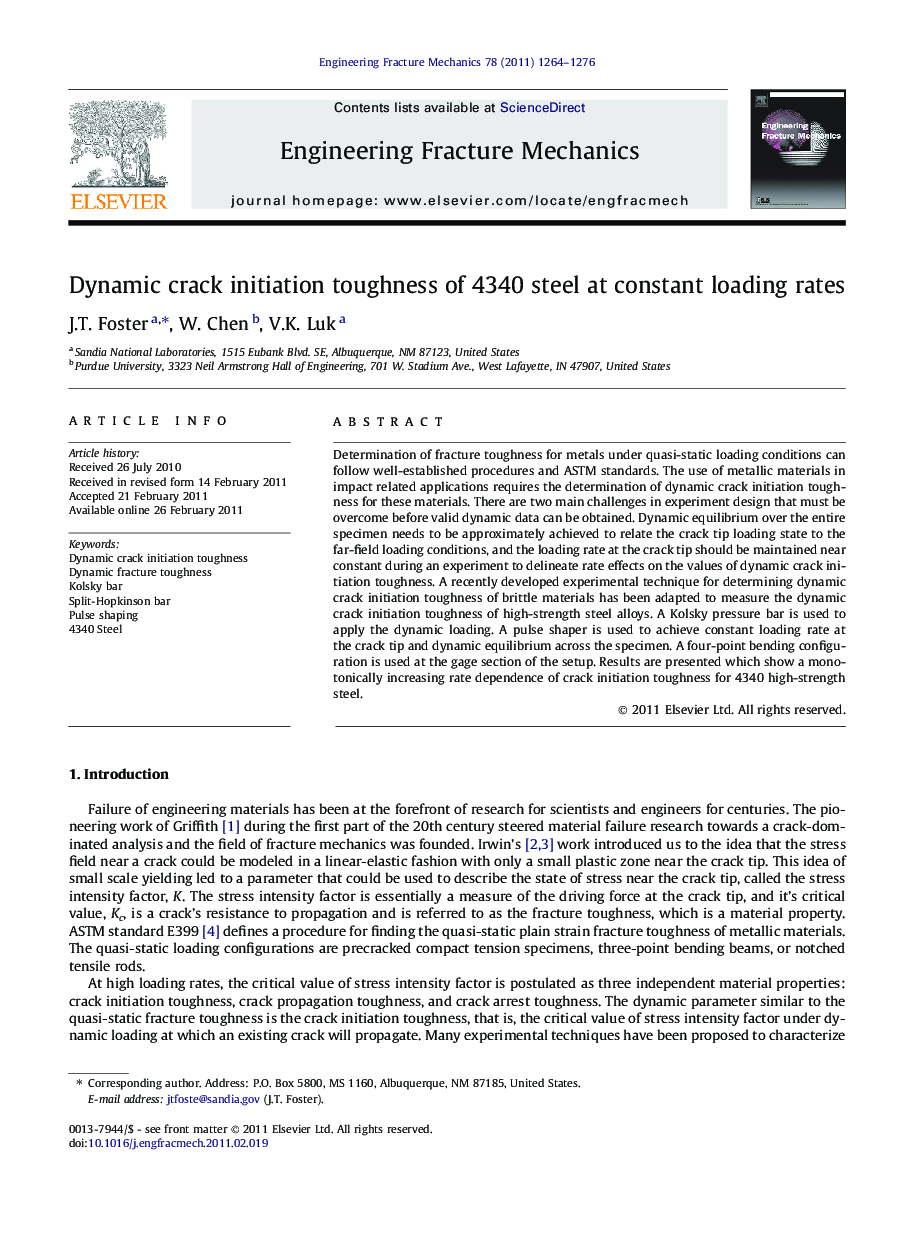| کد مقاله | کد نشریه | سال انتشار | مقاله انگلیسی | نسخه تمام متن |
|---|---|---|---|---|
| 767718 | 897207 | 2011 | 13 صفحه PDF | دانلود رایگان |

Determination of fracture toughness for metals under quasi-static loading conditions can follow well-established procedures and ASTM standards. The use of metallic materials in impact related applications requires the determination of dynamic crack initiation toughness for these materials. There are two main challenges in experiment design that must be overcome before valid dynamic data can be obtained. Dynamic equilibrium over the entire specimen needs to be approximately achieved to relate the crack tip loading state to the far-field loading conditions, and the loading rate at the crack tip should be maintained near constant during an experiment to delineate rate effects on the values of dynamic crack initiation toughness. A recently developed experimental technique for determining dynamic crack initiation toughness of brittle materials has been adapted to measure the dynamic crack initiation toughness of high-strength steel alloys. A Kolsky pressure bar is used to apply the dynamic loading. A pulse shaper is used to achieve constant loading rate at the crack tip and dynamic equilibrium across the specimen. A four-point bending configuration is used at the gage section of the setup. Results are presented which show a monotonically increasing rate dependence of crack initiation toughness for 4340 high-strength steel.
Journal: Engineering Fracture Mechanics - Volume 78, Issue 6, April 2011, Pages 1264–1276